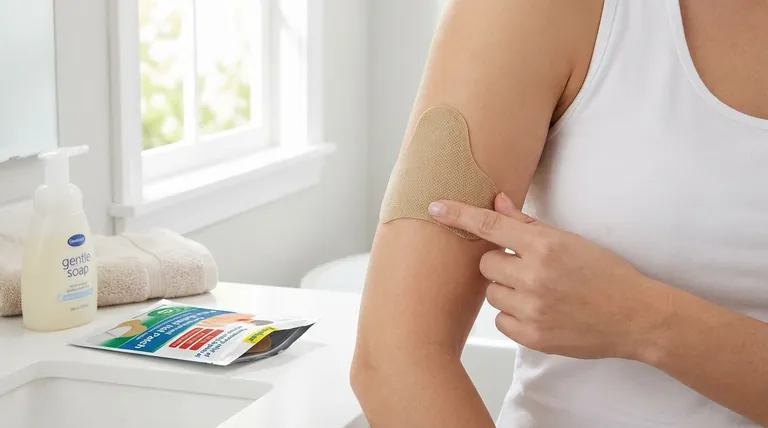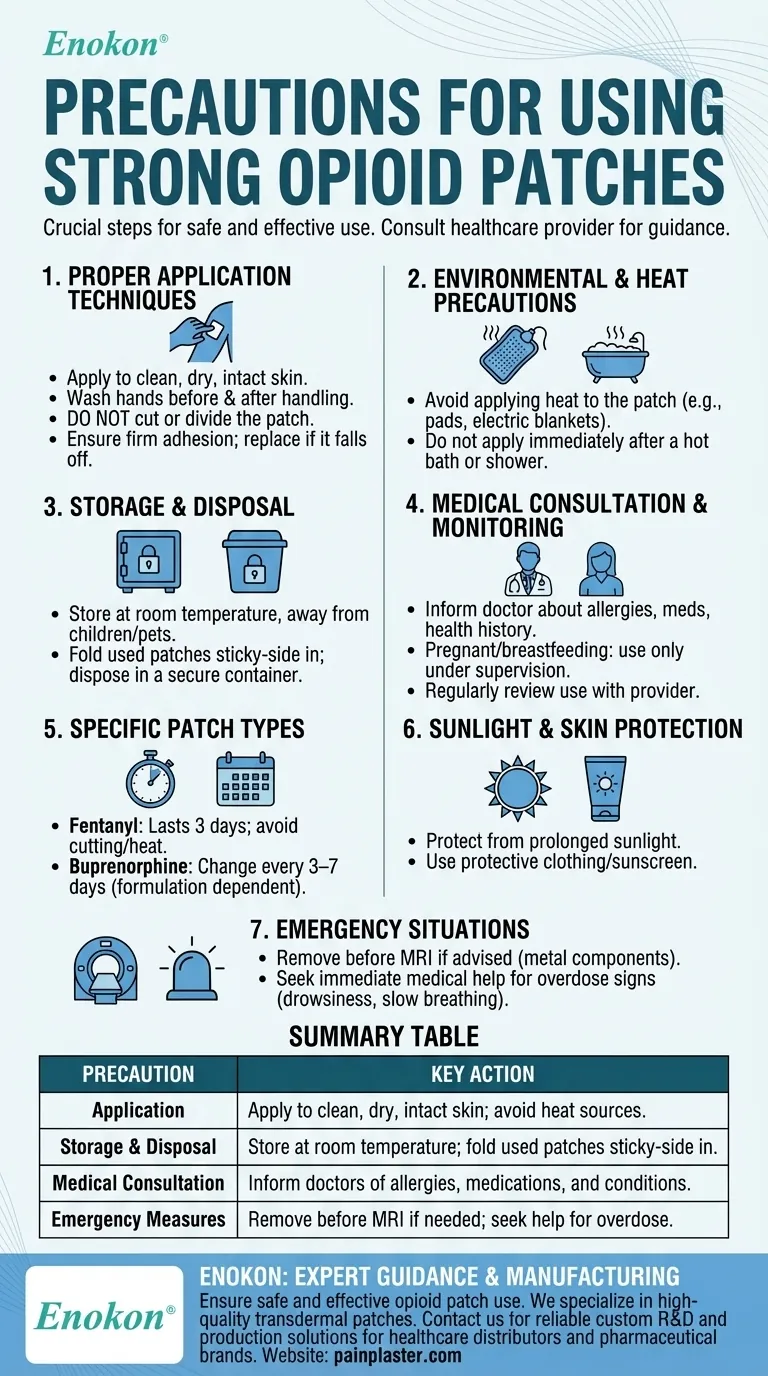When using strong opioid medicated patches, it's crucial to follow specific precautions to ensure safety and efficacy. These patches deliver potent medication through the skin, and improper use can lead to overdose, skin irritation, or other adverse effects. Key measures include proper application, storage, and disposal, as well as awareness of potential interactions and contraindications. Always consult a healthcare provider for personalized guidance, especially if you have underlying health conditions or are taking other medications.

Key Points Explained:
-
Proper Application Techniques:
- Apply to clean, dry, and intact skin. Avoid areas with cuts, sores, or irritation.
- Wash hands before and after handling the patch to prevent accidental transfer of medication.
- Do not cut or divide the patch, as this can alter the dosage and lead to overdose.
- Ensure the patch adheres firmly. If it falls off, replace it immediately.
-
Environmental and Heat Precautions:
- Avoid applying heat (e.g., heating pads, electric blankets) to the patch, as this can increase drug absorption and cause overdose.
- Do not apply the patch immediately after a hot bath or shower, as warm skin can enhance medication release.
-
Storage and Disposal:
- Store patches at room temperature, away from children and pets.
- Dispose of used patches safely by folding them sticky-side in and placing them in a secure container to prevent accidental exposure.
-
Medical Consultation and Monitoring:
- Inform your doctor about allergies, other medications, and medical history (e.g., heart conditions, liver disease) before use.
- Pregnant or breastfeeding individuals should use patches only under medical supervision.
- Regularly review patch use with a healthcare provider to avoid prolonged or unnecessary exposure.
-
Specific Patch Types:
- Fentanyl patches: Typically last 3 days; avoid cutting or exposing to heat.
- Buprenorphine patches: May require changing every 3–7 days, depending on the formulation.
-
Sunlight and Skin Protection:
- Protect the patch and application area from prolonged sunlight to prevent skin reactions.
- Use protective clothing or sunscreen if the patch is exposed to sunlight.
-
Emergency Situations:
- Remove the patch before an MRI if advised, as some patches contain metal components.
- Seek immediate medical help if signs of overdose (e.g., drowsiness, slow breathing) occur.
By adhering to these precautions, you can minimize risks and ensure the safe and effective use of strong opioid patches. Have you considered how these measures align with your daily routine or specific health needs?
Summary Table:
| Precaution | Key Action |
|---|---|
| Application | Apply to clean, dry, intact skin; avoid heat sources. |
| Storage & Disposal | Store at room temperature; fold used patches sticky-side in before disposal. |
| Medical Consultation | Inform doctors of allergies, medications, and health conditions. |
| Emergency Measures | Remove before MRI if needed; seek help for overdose symptoms. |
Ensure safe and effective opioid patch use with expert guidance.
At Enokon, we specialize in manufacturing high-quality transdermal patches tailored to your needs. Whether you're a healthcare distributor or a pharmaceutical brand, our technical expertise ensures reliable custom R&D and production. Contact us today to discuss your requirements and benefit from our industry-leading solutions.
Visual Guide

Related Products
- Far Infrared Deep Heat Relief Patches Medicated Pain Relief Patches
- Capsaicin Chili Medicated Pain Relief Patches
- Far Infrared Pain Patch Relief Pain Reliever for Back
- Prostate Pain Kidney Health Care Patch for Men
- Asthma Cough and Pain Relief Patch for Adults and Kids
People Also Ask
- How do pain relief patches provide targeted relief? Discover the Science Behind Effective Pain Management
- How often should pain relief patches be used? Get the Right Schedule for Targeted Relief
- How do pain relief patches compare to other pain relief methods? Discover Targeted, Long-Lasting Relief
- How effective are pain relief patches for muscle pain? Target Localized Pain with Transdermal Delivery
- How do Deep Heat Pain Relief Patches provide pain relief? Discover the Drug-Free Mechanism















